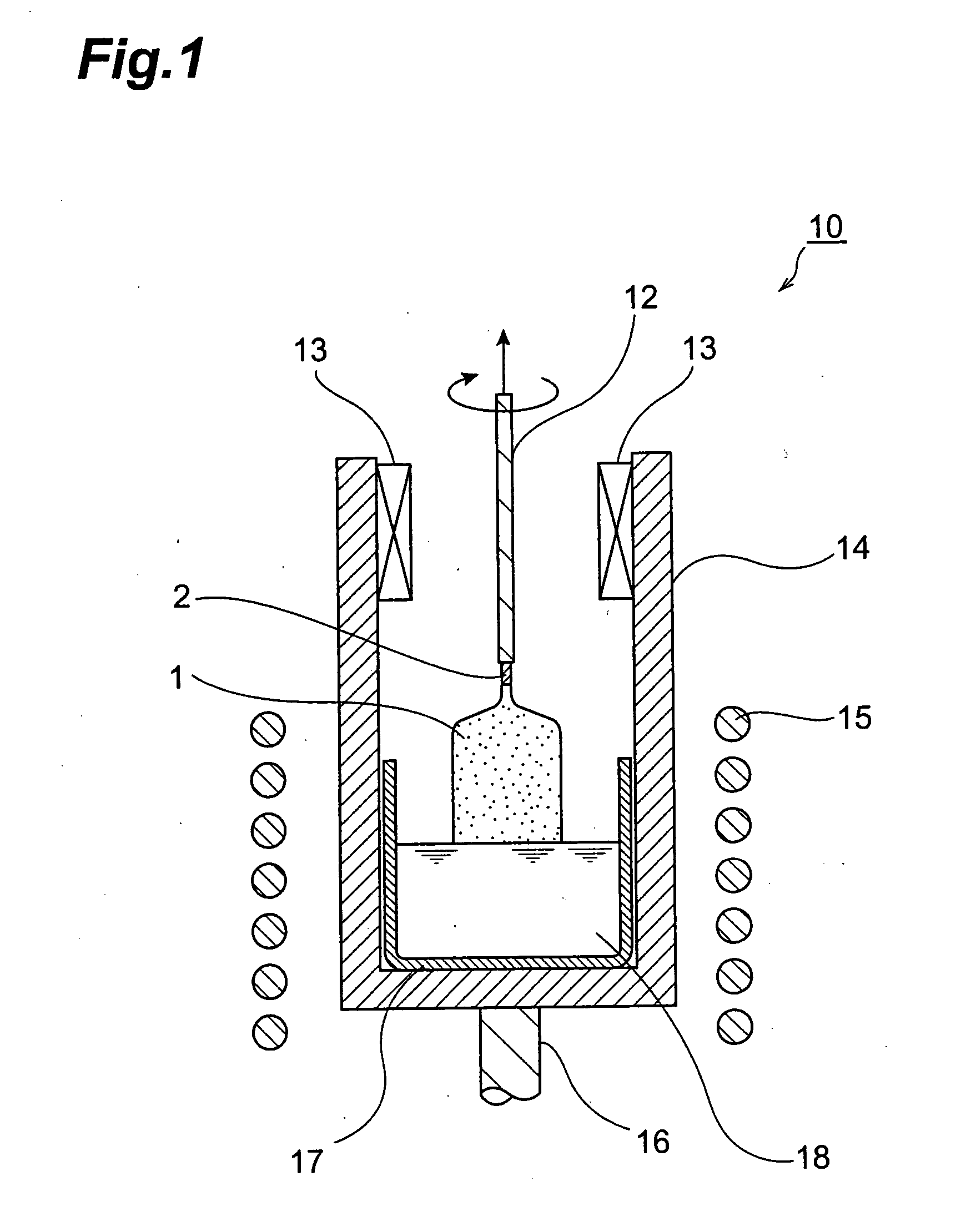Inorganic scintillator
a scintillator and inorganic technology, applied in the field of inorganic scintillators, can solve the problems of luminous efficiency decline and luminous efficiency decline, and achieve the effects of shortening the fluorescence decay time easily and reliably, sufficient luminous efficiency, and sufficient luminous efficiency
- Summary
- Abstract
- Description
- Claims
- Application Information
AI Technical Summary
Benefits of technology
Problems solved by technology
Method used
Image
Examples
example 1
[0054] As materials, 20489.1 g of gadolinium oxide (Gd2O3 with a purity of 99.99 mass %), 3413.1 g of silicon dioxide (SiO2 with a purity of 99.99 mass %), 97.8 g of cerium oxide (CeO2 with a purity of 99.99 mass %), and 2.4 g of hafnium oxide (HfO2 with a purity of 99.99 mass %) were put into an Ir crucible having a diameter of 180 mm, a height of 180 mm, and a thickness of 3 mm, whereby 24002.4 g of their mixture were obtained. The mixture was subsequently heated in a high-frequency induction heating furnace to a temperature of 1950° C. or higher so as to be melted, whereby a melt liquid was obtained.
[0055] Next, the tip of a lifting rod having a seed crystal secured to its lower end was introduced into the melt liquid, so as to perform seeding. Subsequently, a single-crystal ingot having a neck diameter of 8 mm was raised at a lifting rate of 1 to 3 mm / h, so as to form a neck part. Then, a cone part (cylindrical part) was raised. Here, the raising of the cylindrical part was sta...
PUM
| Property | Measurement | Unit |
|---|---|---|
| thickness | aaaaa | aaaaa |
| height | aaaaa | aaaaa |
| diameter | aaaaa | aaaaa |
Abstract
Description
Claims
Application Information
 Login to View More
Login to View More - R&D
- Intellectual Property
- Life Sciences
- Materials
- Tech Scout
- Unparalleled Data Quality
- Higher Quality Content
- 60% Fewer Hallucinations
Browse by: Latest US Patents, China's latest patents, Technical Efficacy Thesaurus, Application Domain, Technology Topic, Popular Technical Reports.
© 2025 PatSnap. All rights reserved.Legal|Privacy policy|Modern Slavery Act Transparency Statement|Sitemap|About US| Contact US: help@patsnap.com

